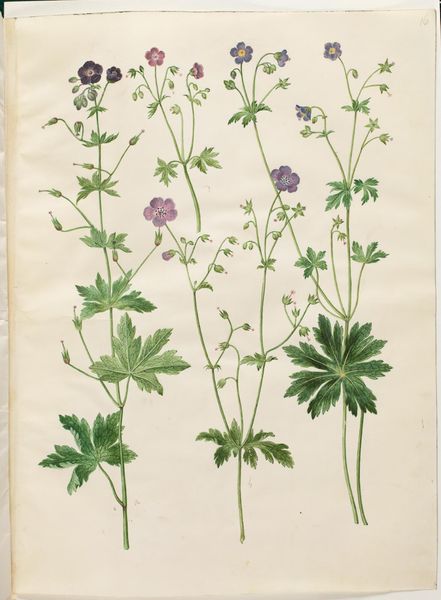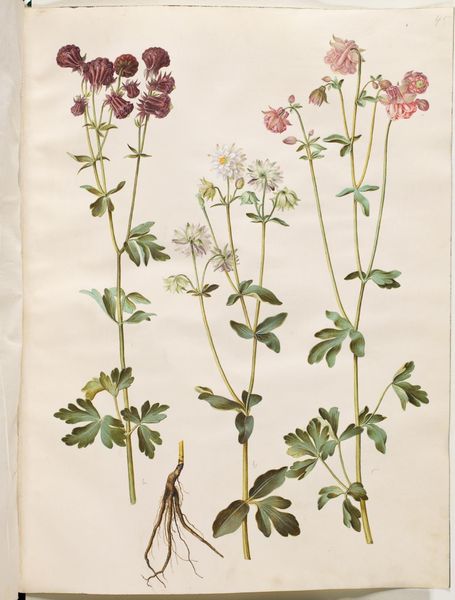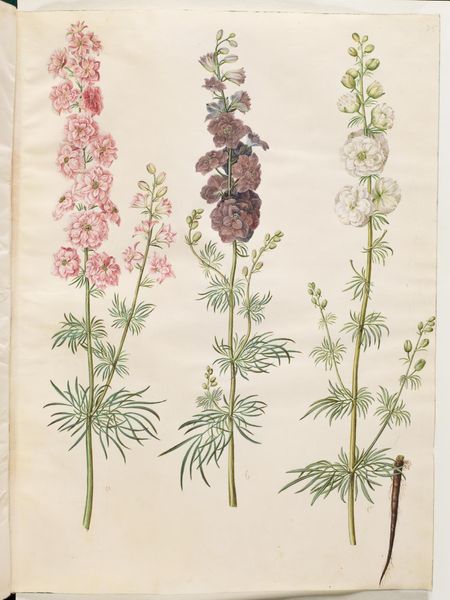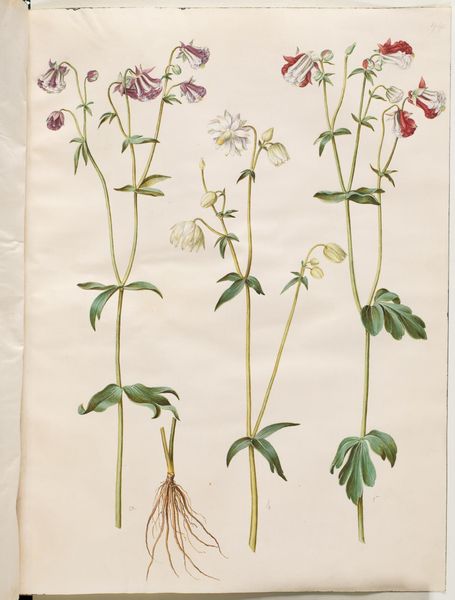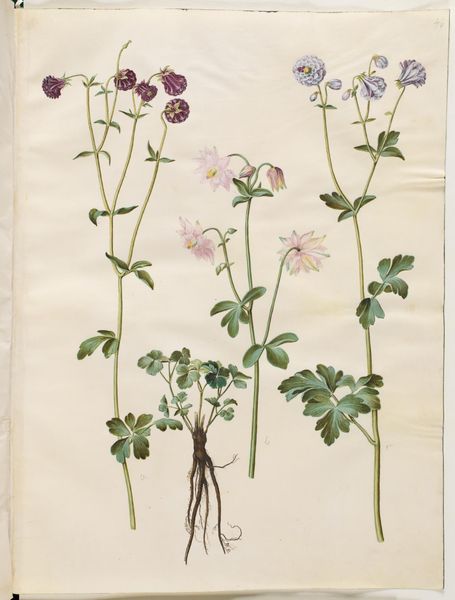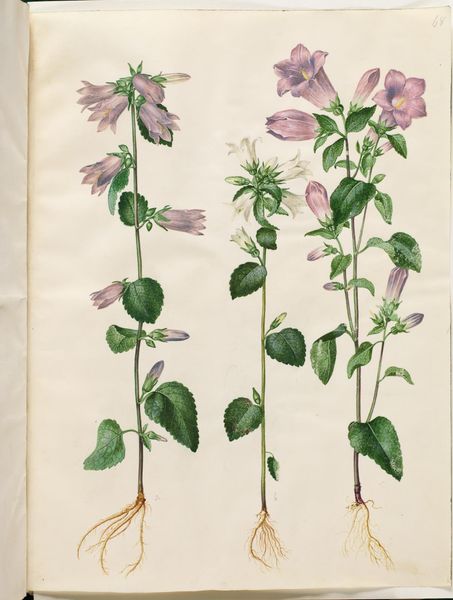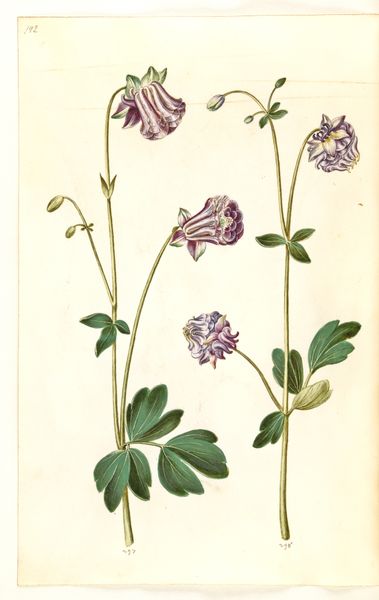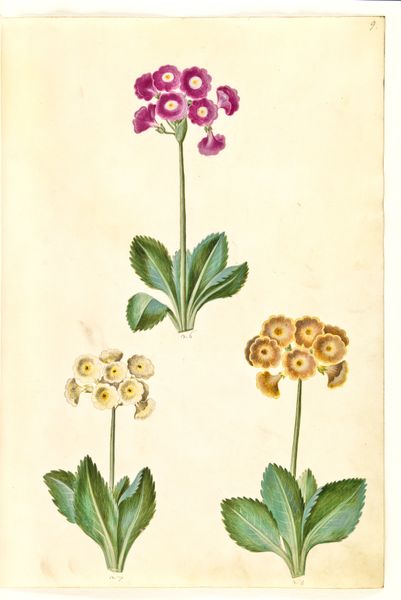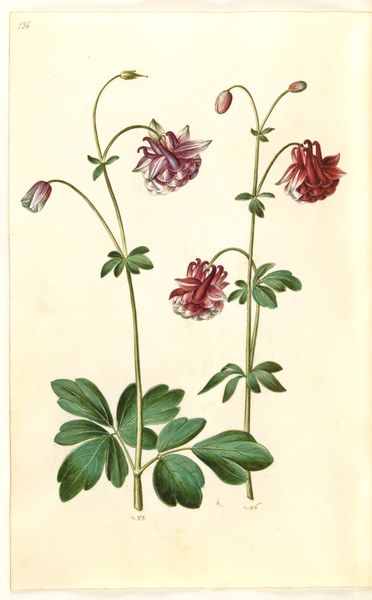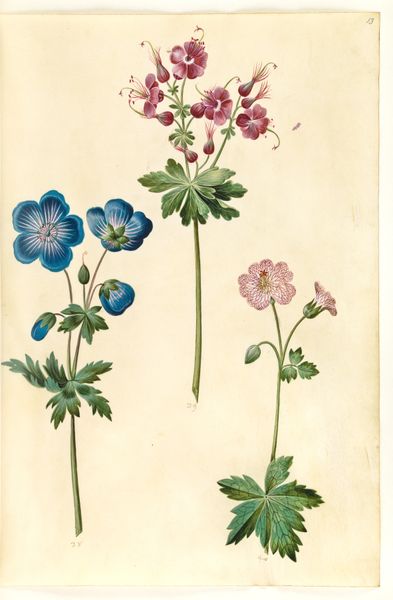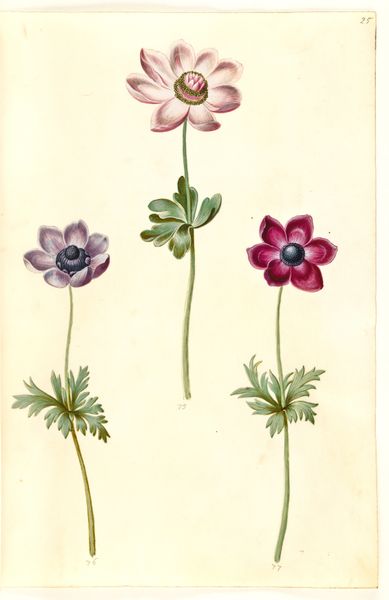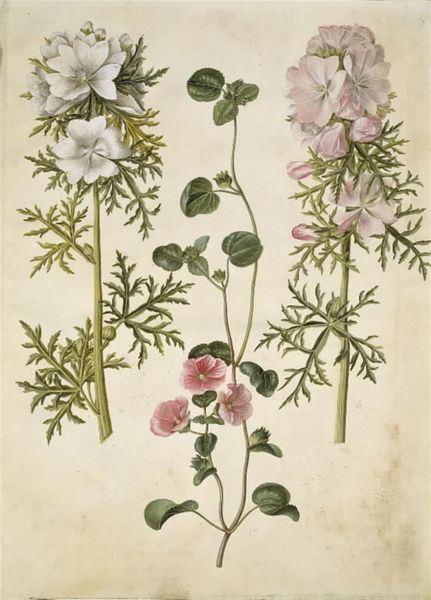
Geranium phaeum (bølgekronet storkenæb); Geranium versicolor (net-storkenæb) 1649 - 1659
0:00
0:00
drawing, gouache
#
drawing
#
baroque
#
gouache
#
botanical art
Dimensions: 505 mm (height) x 385 mm (width) (bladmaal)
Curator: Before us, we have a drawing made between 1649 and 1659 by Hans Simon Holtzbecker. It’s rendered in gouache, and showcases two types of geranium: Geranium phaeum, the dusky crane's-bill, and Geranium versicolor, or net-veined crane's-bill. Editor: It’s lovely, isn't it? There's a stillness about the piece; almost photographic in its detail. The colours are muted, creating a calming effect, despite the close observation of natural detail. Curator: Holtzbecker was a sought-after artist at the Danish court; he specialized in botanical illustration. He served both King Christian IV and Frederik III. The labor that goes into the accurate representation of such plants also speaks volumes about access to materials like paper, brushes, and pigments. Editor: That makes me wonder, who was the audience for such detailed depictions? Was it purely scientific, for the classification and understanding of plant life, or did these botanical illustrations play a part in showcasing royal power and control over nature's bounty, much like meticulously sculpted gardens? Curator: Good point! Botanical illustrations served several functions. Certainly, they provided documentation for scientific study, especially as European exploration expanded. But, the patronage from royal figures definitely points towards status and luxury. Displaying them showcased a mastery of the natural world and perhaps also exotic species brought back from distant lands. Editor: Right, and it reflects back to us, today, in a museum setting, a lens for viewing nature, science, and status through an art-historical viewpoint. How has the way we treat these depictions changed across time? Curator: Indeed. Now, the consumption of imagery extends across printed matter, educational material, digital realms... and we're contributing to that, analyzing Holtzbecker’s material means through our conversation. It illustrates how the accessibility of information and the perceived value of labor have drastically shifted since Holtzbecker’s time. Editor: I appreciate how closely Holtzbecker has studied his subject; there is no idealization, but honest portrayals with delicate execution. A keen eye observes texture, variation in leaves and even small flaws. Curator: By understanding its place within society and its modes of production, the object becomes more than just a depiction. Thank you, that was very enlightening. Editor: Absolutely, a closer examination has certainly deepened my understanding of the image.
Comments
No comments
Be the first to comment and join the conversation on the ultimate creative platform.
